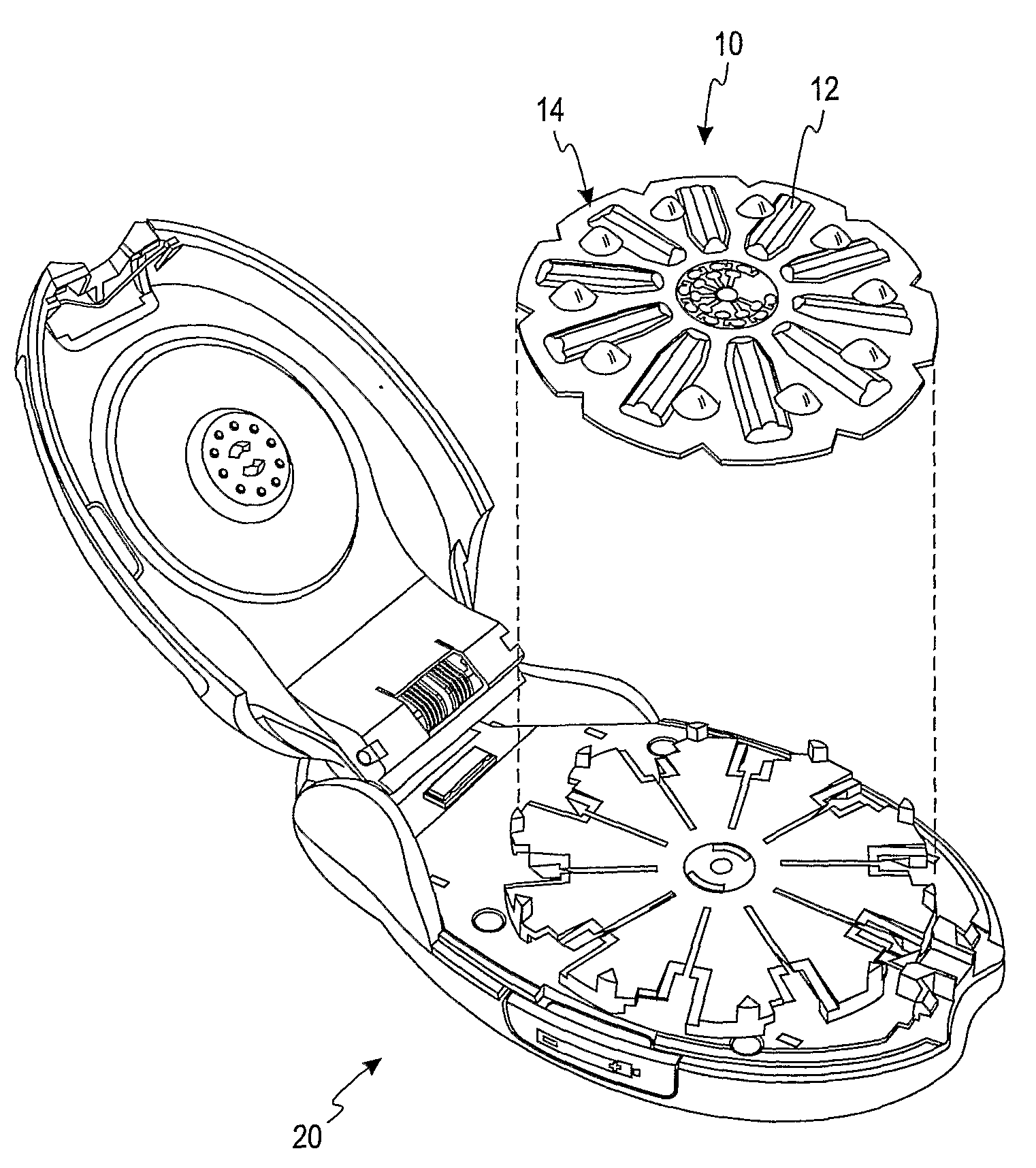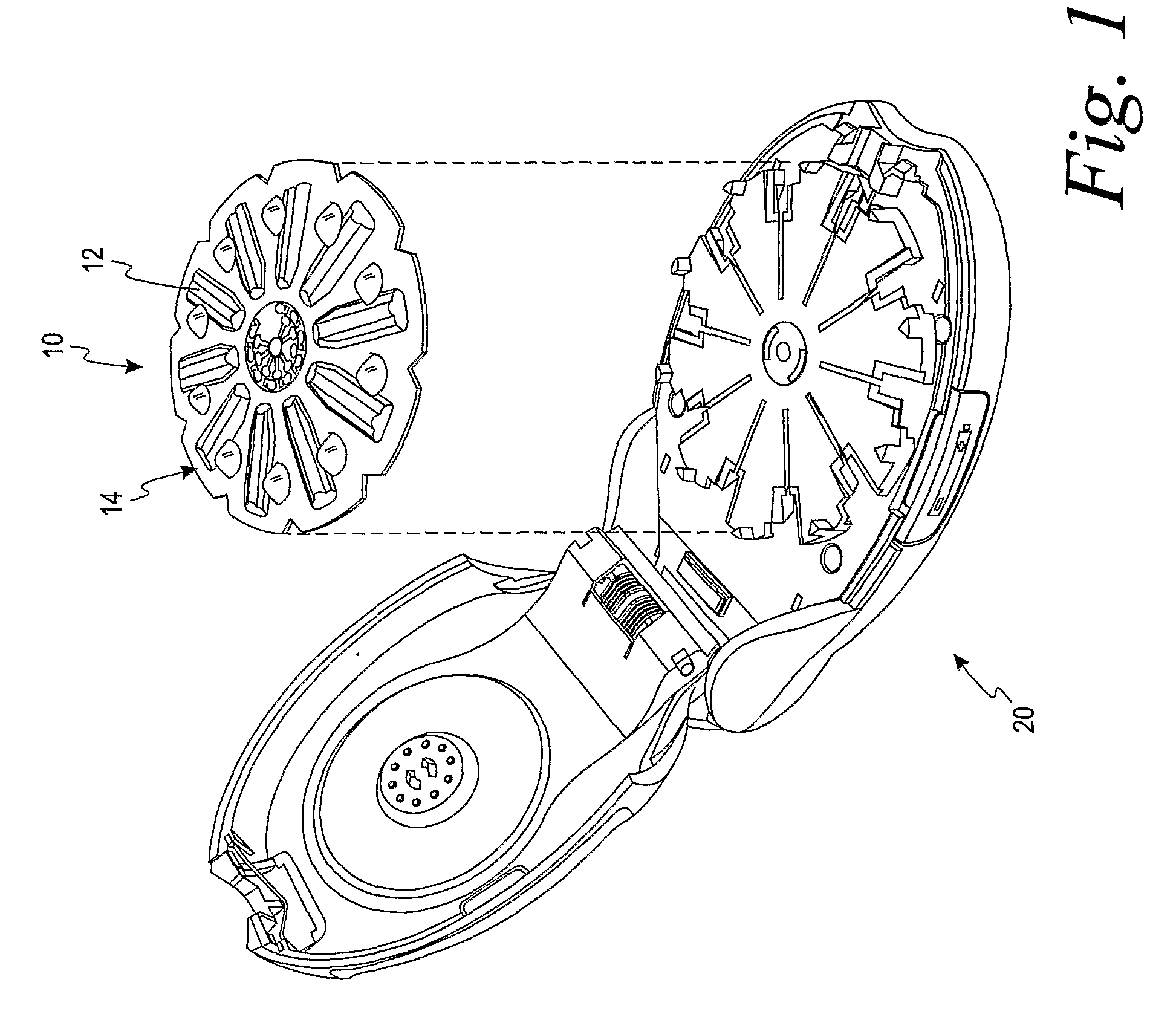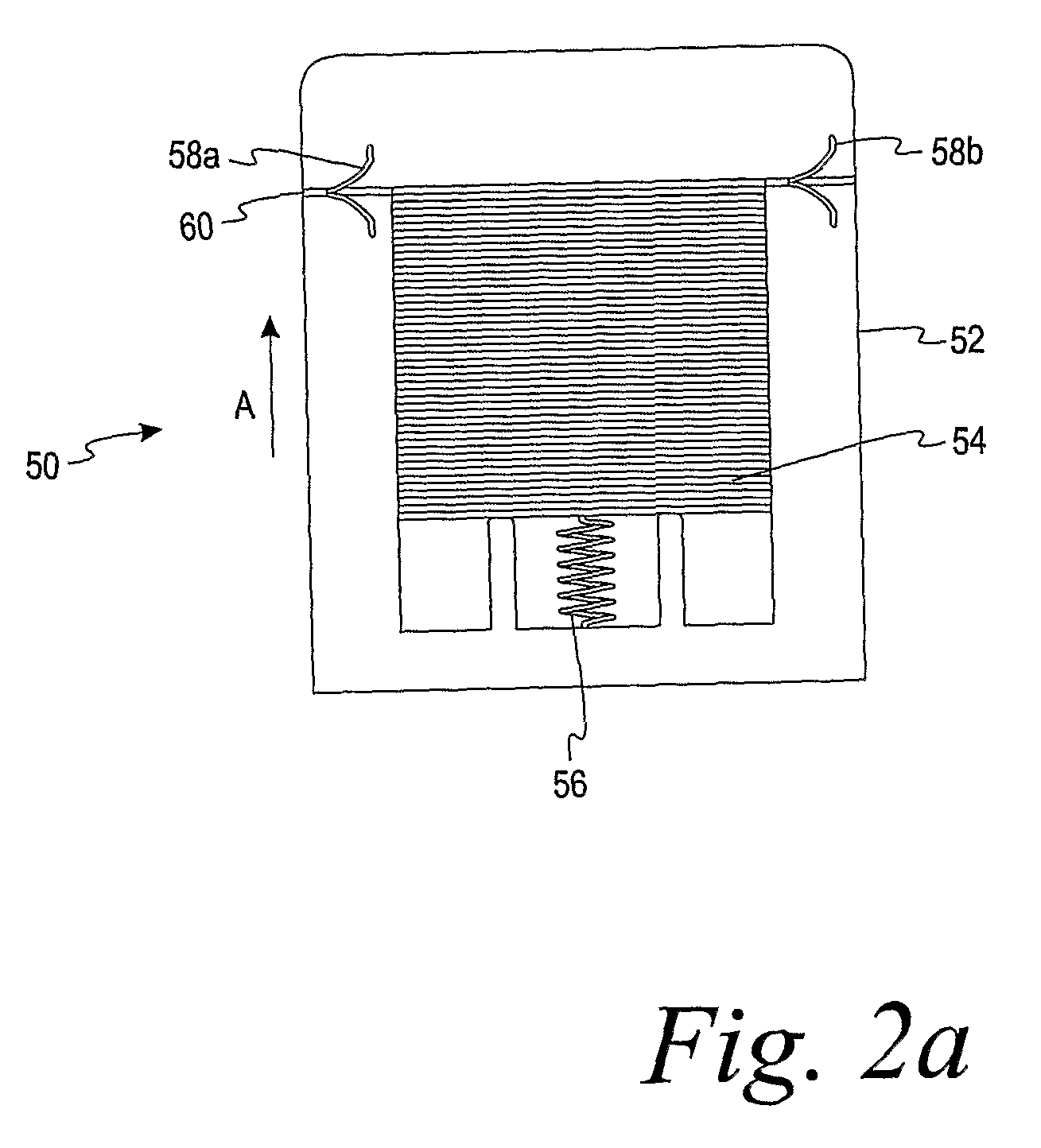Test Sensor Reagent Having Cellulose Polymers
a technology of cellulose polymer and reagent, which is applied in the direction of liquid/fluent solid measurement, material electrochemical variables, instruments, etc., can solve the problems of affecting the stability of the sensor, and containing reagents
- Summary
- Abstract
- Description
- Claims
- Application Information
AI Technical Summary
Benefits of technology
Problems solved by technology
Method used
Image
Examples
##ventive example 1
Inventive Example 1
HEC-Based Reagent
[0045]
REAGENT COMPONENTWEIGHT %*Purified Water60-80Smectite Clay0.2-1.6Citrate Buffer25-200 mMolarFluorocarbon Surfactant0.02-0.1 Hydroxyethyl cellulose3.6-6.0Potassium Ferricyanide15-20Glucose Oxidase Enzyme1.0-4.0*Unless other units are indicated.
example 3
[0047]To assess test sensor stability, a test was performed on two lots of test sensors to determine the percentage of glucose oxidase recovery that occurred after the test sensors were stored at −20 degrees C. and 50 degrees C. for two and four weeks. One lot of test sensors having an HEC-based reagent was compared with a second lot of test sensors having a PEO-based reagent. At the end of the test sensor storage period, the test sensors were extracted with a buffer and the glucose oxidase activity in the test sensor extracts was analyzed using standard enzyme activity analysis methods.
[0048]The results of the testing are shown in FIG. 5. Although both lots of test sensors were formulated with the same amount of glucose oxidase in the reagent, the glucose oxidase activity recovery for the HEC-based reagent was greater than the glucose oxidase activity recovery for the PEO-based reagent. This was true for both lots of test sensors that were stored at −20 degrees C. and 50 degrees C....
example 4
[0049]FIG. 6 illustrates the results of testing to assess the reagent background change in test sensors having a HEC-based reagent and in test sensors having a PEO-based reagent as a function of reagent storage time at 5 degrees C. for up to six weeks. The increase in reagent background as a function of reagent storage time is the result of non-glucose related conversion of ferricyanide to ferrocyanide. At each stability checkpoint, the reagent background was analyzed with a flow injection system to quantify the relative amount of ferrocyanide generated during storage. The percent of reagent background increase was calculated by comparing the reagent background current at each checkpoint to the reagent background current at initial checkpoint. As seen in FIG. 6, the HEC-based reagent showed less increase in background over the six week period compared to the PEO-based reagent.
PUM
| Property | Measurement | Unit |
|---|---|---|
| Time | aaaaa | aaaaa |
| Time | aaaaa | aaaaa |
| Fraction | aaaaa | aaaaa |
Abstract
Description
Claims
Application Information
 Login to View More
Login to View More - R&D
- Intellectual Property
- Life Sciences
- Materials
- Tech Scout
- Unparalleled Data Quality
- Higher Quality Content
- 60% Fewer Hallucinations
Browse by: Latest US Patents, China's latest patents, Technical Efficacy Thesaurus, Application Domain, Technology Topic, Popular Technical Reports.
© 2025 PatSnap. All rights reserved.Legal|Privacy policy|Modern Slavery Act Transparency Statement|Sitemap|About US| Contact US: help@patsnap.com



